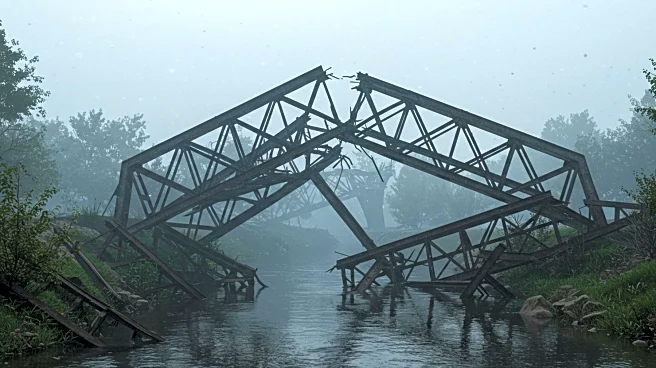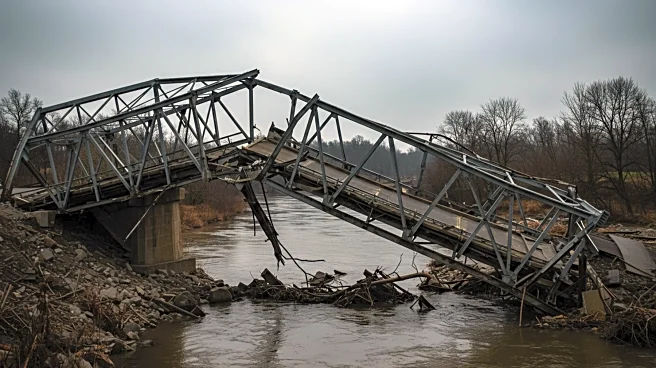What's Happening?
A tragic incident occurred on the Qinghai section of the Sichuan-Qinghai Railway, where a construction rope broke, leading to the collapse of a bridge under construction. This accident resulted in the deaths of seven individuals, with nine others reported missing. The incident took place around 3 am, involving 15 construction workers and one on-site manager from the engineering project department. The bridge, located at the border between Jianzha county in the Huangnan Tibetan autonomous prefecture and Hualong Hui autonomous county in Haidong prefecture, Qinghai province, is noted as the first steel truss arch railway bridge in China to cross the Yellow River. The cable towers of the bridge were completed on June 14, with plans to join them this month.
Why It's Important?
The collapse of the Sichuan-Qinghai Railway bridge highlights significant safety concerns in large-scale infrastructure projects in China. This incident not only underscores the potential risks faced by construction workers but also raises questions about the safety protocols and oversight in place for such projects. The loss of life and the number of missing individuals could lead to increased scrutiny of construction practices, particularly in regions like Tibet, where local employment opportunities are often limited due to the importation of mainland Chinese workers. This event may prompt calls for improved safety measures and more inclusive employment practices in future projects.
What's Next?
In the aftermath of the bridge collapse, investigations are likely to be conducted to determine the cause of the rope failure and assess the overall safety of the construction site. Authorities may implement stricter safety regulations and oversight to prevent similar incidents in the future. Additionally, there could be increased pressure on construction firms to employ more local workers, providing much-needed job opportunities in the region. The incident may also lead to delays in the completion of the railway project, affecting transportation plans and economic activities linked to the railway's operation.













